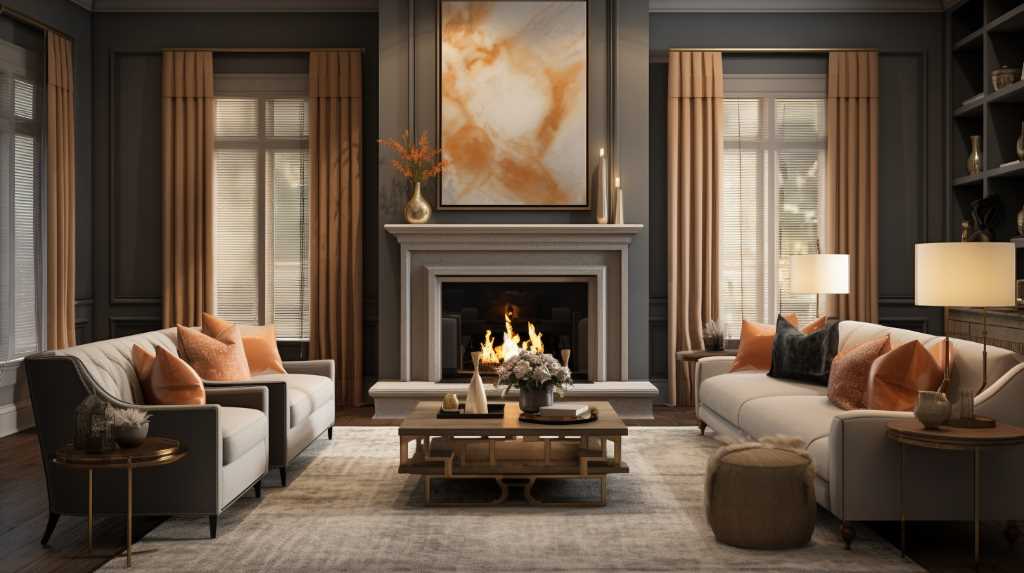Home design is more than merely arranging furniture aesthetically in a space; it’s actually a comprehensive procedure for transforming the weather and functionality of your room. It’s an art form that marries aesthetics, functionality, along with the personality with the occupants to generate a harmonious and welcoming living or working place. In this article, we’re going to explore the basic principles of design and just how it can increase the spaces we inhabit.

Understanding Interior planning
Design is the process of planning, organizing, and decorating the lining of a space to make a visually pleasing and functional environment. It has a wide range of elements, including color schemes, furniture selection, lighting, spatial arrangement, as well as picking a decorative elements like artwork, rugs, and curtains.
Key Principles of Interior planning
1. Balance: Achieving balance within a space is vital to creating a harmonious atmosphere. There are two forms of balance in home design: symmetrical and asymmetrical. Symmetrical balance involves arranging elements evenly for both sides of the central axis, while asymmetrical balance is achieved by way of a careful arrangement of different factors that create visual equilibrium.
2. Harmony and Unity: Harmony will be the a sense cohesion and consistency in the design. It demands using elements and principles that complement each other, making a feeling of unity inside a space. A harmonious 70s interior design should convey an even style, colors, and theme.
3. Scale and Proportion: Scale and proportion refer to the size and style and relationships of various elements inside a space. A well-designed room considers the size and style of furniture, decor, and architectural features to ensure that they come together seamlessly.
4. Emphasis and Focal Points: Setting up a centerpiece within a room draws attention to a unique area or element, like a art work, a fire, or even a statement furniture. Emphasizing certain elements allows you move the viewer’s eye and adds interest to the space.
5. Rhythm and Repetition: Rhythm will be the flow and movement inside a room. Repeating colors, shapes, patterns, or textures can make a a feeling of rhythm and cohesiveness in the design.
The Interior Design Process
Interior designers adhere to a structured process to achieve their vision. This procedure typically includes the following stages:
1. Initial Consultation: The designer fulfills the client to understand the requirements, preferences, and budget. This method is important in establishing the project’s direction.
2. Space Planning: Within this phase, the designer results in a layout that optimizes the application of space while taking into consideration the client’s functional requirements.
3. Concept Development: The designer develops a design that encompasses the design, color palette, and overall mood of the space. This concept serves as a blueprint for the project.
4. Material and Furniture Selection: The designer chooses materials, furniture, lighting, and accessories that align with all the design concept, ensuring they meet the client’s aesthetic and functional goals.
5. Execution: This stage involves implementing the structure plan, such as coordinating with contractors, overseeing construction or renovations, and managing the installing of furnishings and decor.
6. Styling and Decoration: The ultimate touches, such as arranging decor and adding personal touches, are crucial to perform space to make it genuinely unique.
Interior design is really a multifaceted discipline that transforms empty rooms into personalized and functional spaces. It combines creativity, problem-solving skills, and an understanding of human psychology to make environments that reflect the personality as well as of these occupants. It could be a cozy lounge, a competent workspace, or even a luxurious hotel suite, interior planning has the strength to increase our surroundings and enrich us. By staying with the foundations and operations outlined in the following paragraphs, it is possible to attempt a journey to craft spaces that inspire and delight.
To read more about small apartment interior design have a look at this net page
